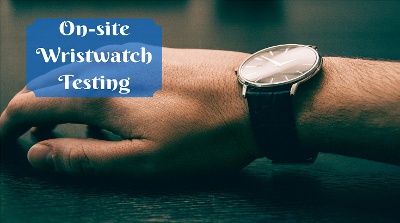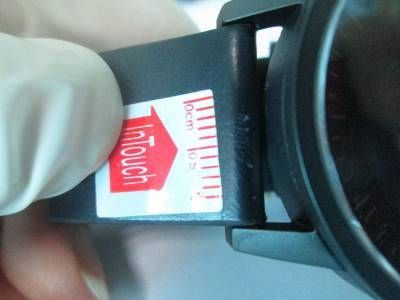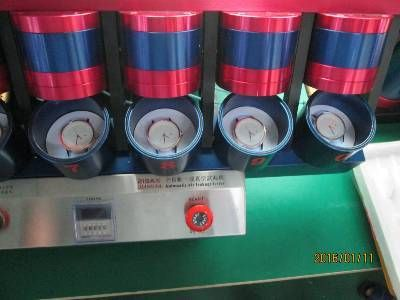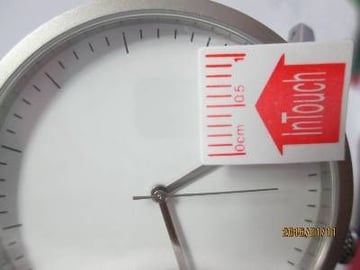 Whether you’re after a Rolex, leather band Calvin Klein or a plastic Hello Kitty watch, a wristwatch can be a very unique and personal addition to a person’s everyday attire. The variety of different styles is almost endless. A watch can make a statement, add elegance, be passed down as an heirloom or simply add practicality to your life.
Whether you’re after a Rolex, leather band Calvin Klein or a plastic Hello Kitty watch, a wristwatch can be a very unique and personal addition to a person’s everyday attire. The variety of different styles is almost endless. A watch can make a statement, add elegance, be passed down as an heirloom or simply add practicality to your life.
Knowing that buying a watch can be an exciting and often expensive process for consumers, it's important for you, as a watch supplier or importer, to ensure that your customers are receiving the level of quality they're paying for.
Here are five of the top on-site tests for watches:
1. Water resistance testing
Checking for water resistance is often one of the most important on-site tests for watches to conduct during product inspection. Many manufacturers make claims that a watch is “water resistant” or “water proof” to a certain depth. As with any product claim, it’s important to validate water resistance to prevent unnecessary damage to the product during use.
There are two main procedures used to verify a watch’s water resistance that can be used on-site at a factory:
Resistance to water overpressure
It’s important to check watches against their rated pressures. The procedure for resistance to water overpressure testing is as follows:
1. Immerse the watch in a suitable pressure vessel and gradually increase pressure over the course of 1 minute until reaching the rated pressure (or to 2 bar in cases where no additional indication is given).
2. Maintain rated pressure for 10 minutes.
3. Reduce to ambient pressure (normal or 1 atm) gradually over the course of 1 minute.
4. Check the watch for evidence of water intrusion. If water has penetrated the watch face, it fails this test.
| Water Resistance for Watches | ||||||||
| Rated Pressure | Suitable Applications | |||||||
| Bar | atm | Depth | Accidental splashes | Swimming | Snorkelling | High board Diving | High-impact water sports | Scuba / saturation diving |
| 3 | 3 | 30m (100ft) | X | |||||
| 5 | 5 | 50m (165ft) | X | X | ||||
| 10 | 10 | 100m (330ft) | X | X | X | |||
| 20 | 20 | 200m (660ft) | X | X | X | X | X | |
| 30 | 30 | 300m (1000ft) | X | X | X | X | X | X |
Resistance to condensation
Condensation can be another concern with regard to checking watches for water resistance. The procedure for condensation testing is made up of three phases and is as follows:
1. Hot plate phase
a. Place the watch on a hot place at a temperature measuring 40 ⁰C – 45 ⁰C (104 ⁰F – 113 ⁰F) until the watch has reached the same temperature.
b. Add a drop of water measuring 18 ⁰C – 25 ⁰C (64 ⁰F – 77 ⁰F) in temperature to the glass face of the watch.
c. After 1 minute, wipe the glass clean with a dry rag.
d. The watch fails this test if it shows condensation on the interior surface of the glass.
2. Immersion phase
a. Immerse the watch in 10 ± 2 cm (~ 4 in) of water at 20 ⁰C and 40 ⁰C (68 ⁰F and 104 ⁰F) for 5 minutes each. Transition time between temperatures should not exceed 1 minute.
b. Repeat the hot plate phase.
3. Immersion phase for operative parts
a. Immerse the watch in 10 ± 2cm (~ 4in) of water with a force of 5 N perpendicular to the crown and pusher buttons (if any) for 10 minutes.
b. Repeat the hot plate phase.
2. Accuracy check for watches
Accuracy is obviously a key feature of an effective watch.
Checking for watch accuracy requires keeping time for at least a day. Note the displayed time, including hours, minutes and seconds, on the watch once and then again 24 hours later.
When testing an analog watch, clock or electronic LCD watch, a tolerance of ± 3 seconds per day is acceptable. For a quartz watch or clock, a tolerance of ± 1 second per day is acceptable.
3. Battery check
Power issues related to a watch’s battery can lead to inaccuracy with keeping time. It’s wise to perform this simple check, especially if you’re an importer of watches.
It’s not uncommon for a factory to substitute a specified battery for a cheaper one without informing their customer. This is one way factories can save money. The problem is that using substandard components can often hurt product performance. And cheaper batteries often have a lower power capacity.
Battery voltage is verified using a multimeter during product inspection. The measured voltage should not be less than the stated voltage on the watch’s packaging. The expiration date of the battery should also be checked to make sure it conforms to your standards.
4. Basic function testing for watches
Basic function tests for watches are needed to ensure that the watch can withstand normal, everyday use and abuse. A thorough product inspection for watches should include all of the following:
1. Check for basic function after abuse – used to simulate a person accidentally bumping their wrist into a wall or onto a desk.
a. Slam the watch against the palm of your hand.
b. For analog watches, check that the hands of the watch have not stopped.
c. Check for no obvious movement or wobbling of the crown.
2. Check for smooth crown operation. The crown should move smoothly when used. There should be no obvious movement or wobbling when it’s pushed in.
3. Check hand alignment by verifying the minute and hour hands (and second hand if present) align at 3:00, 6:00, 9:00 and 12:00.
5. Fatigue test for watches
Fatigue testing is commonly needed for inspecting consumer goods. When it comes to tests for watches, this one is especially important since watches are an item worn by the user and are typically meant to withstand prolonged continuous use. Aside from simply ensuring a watch runs continuously during inspection—often several hours—with no interruptions, there are two other suggested checks:
the user and are typically meant to withstand prolonged continuous use. Aside from simply ensuring a watch runs continuously during inspection—often several hours—with no interruptions, there are two other suggested checks:
1. Check the wristband for durability by wearing and removing the watch 10 times. The junction of the frame and the band should not show any signs of wear or damage.
2. Check the crown for durability by pushing and pulling it 50 times and checking for signs of malfunction. The crown should still operate smoothly.
Conclusion
A watch can be a cheap, promotional product or a high-end luxury good. Not only can a watch be expensive, it can also be a very personal item. That’s why on-site tests are a vital part of product inspection for watches. Whether you’re an importer or an end consumer, you probably value a watch that is accurate, holds up to your needs and lives up to claims made by the manufacturer.
Make sure to include these tests in your next product inspection of watches. There’s no better way to know you’re getting what you pay for.









